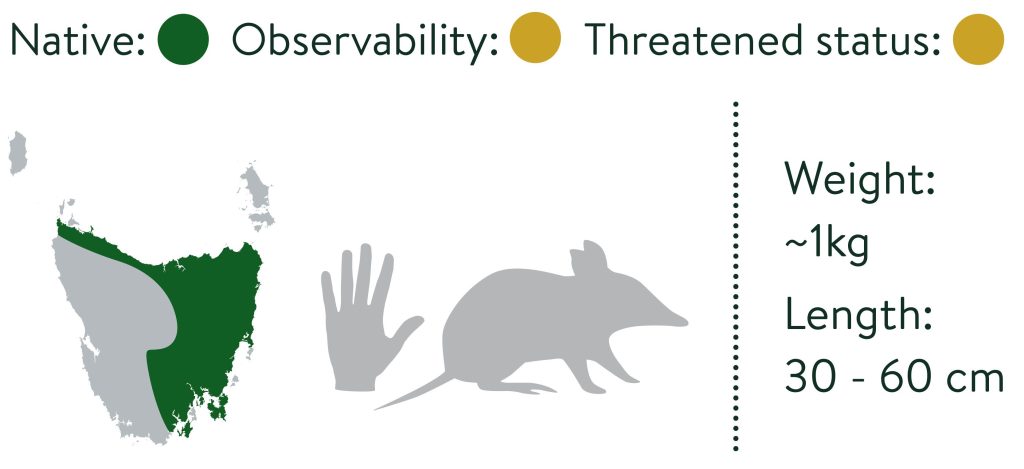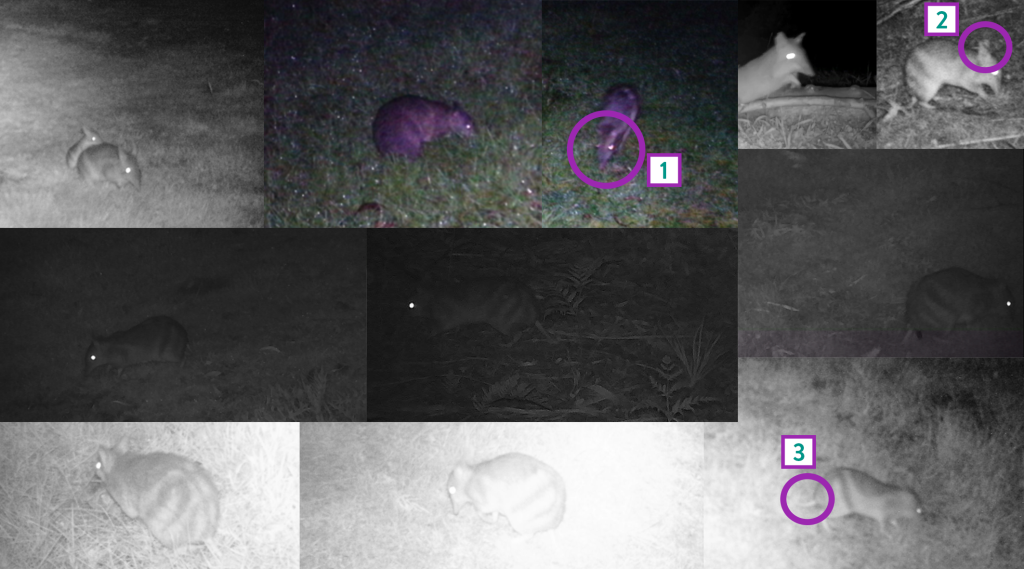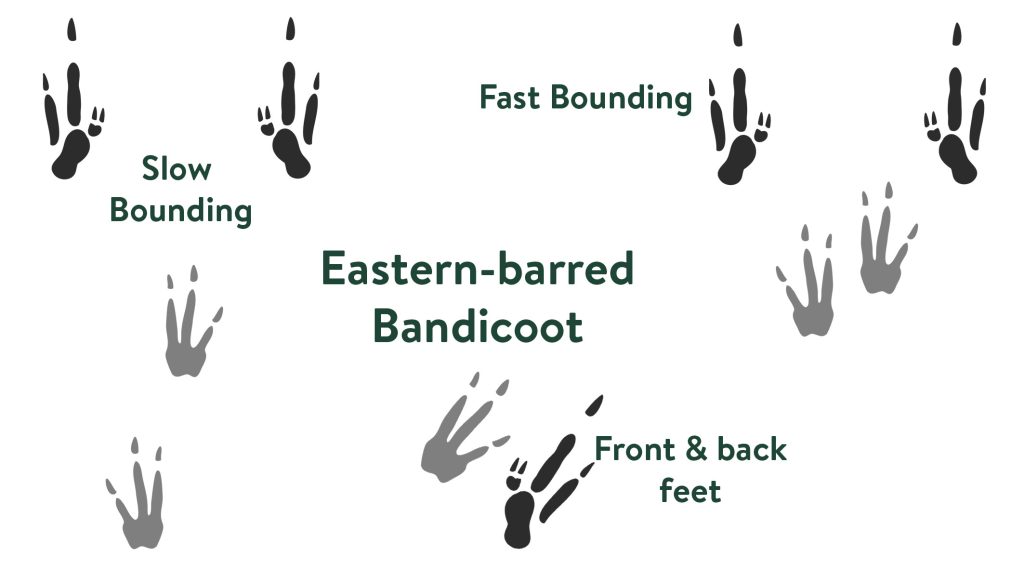Peramelidae | Perameles gunii
Eastern barred bandicoots were considered extinct in mainland Australia until 2021, but some impressive conservation efforts have since reintroduced these marsupials to Victoria. Nonetheless, Tasmania remains the stronghold for this species, despite significant population crashes (crash bandicoot 

Lifestyle
EBBs are nocturnal. Males have an average home range of around 5ha and females 2ha. As EBBs age, their bars tend to fade. Most litters in Tasmania are of 2 or 3 pups which may be born at any time of year. Young can leave the pouch after 50 days or so and live for up to 3 years.

Key identifying features
Very long, conical muzzle (1). Large and pointed ears (2). Yellow-brown coat with three or four pale stripes on the hindquarters. Barring may become more obscure in older animals. Very short white tail (3). Grey-white underbelly and feet.
Similar species
Southern brown bandicoot – Lacks striped hindquarters; has smaller more rounded ears; shorter muzzle.
Long-nosed potoroo – Muzzle is more sculpted (not symmetrical); longer tail that may have white tip; longer rear limbs causing a more hunched (kangaroo-like) stance.
Habitats
Grassy woodlands but can be found in agricultural lands, parks and gardens. Often uses dense weeds like gorse for shelter.
Diet
Generalist omnivore. Invertebrates including earthworms, cockroaches and moths. Bulbs and roots. Fruits of exotic plants like blackberry or orchard trees.
Threats
Habitat clearing and fragmentation. Predation by cats and dogs. Drought and changes in food abundance. Potentially infection by Toxoplasma gondii.

